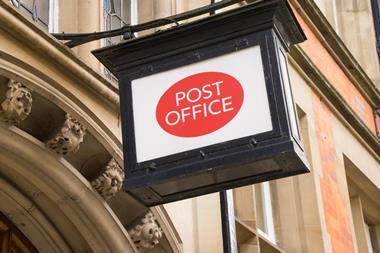The Big Society may be David Cameron’s big idea but in the grocery sector communities have been pulling together for years for the benefit of the greater good, as Judy Sharp discovers
The scenario is all too familiar. Faced with soaring overheads and dwindling profits, village shop owner Peggy Woolley announced in October 2009 that she was going to have to close her store.
However, dismayed villagers refused to take the news lying down and, following months of fundraising, a community-owned store rose from the ashes of the former village shop in June last year.
Woolley’s store may be in the fictitious village of Ambridge in BBC Radio 4’s long-running radio soap The Archers, but it doesn’t diminish the fact that community-ownership initiatives such as this save about 15% of village shop closures each year. According to a report published in January by The Plunkett Foundation, community shops are booming. There are currently 251 of these community enterprises in the UK with on average 19 new shops opening each year.
The foundation, which promotes and supports co-operatives and social enterprises in rural communities, estimates that annual turnover for these stores in 2010 was £33m up 7% year-on-year. Their growth has been so impressive that even the Co-operative Group is getting in on the act, launching an Enterprise Hub last month to offer help to people who want to set up their own co-operatives.
So how is this sector succeeding where so many others have failed?
Arthur Potts Dawson, founder of The People’s Supermarket in London (above), argues that a lot of the time these ventures are born out of necessity rather than desire. Whether the local community is urban, suburban or rural, people expect to have access to a good quality grocery store, he argues, and those who don’t are increasingly prepared to take action. “The people have to do something,” he says. “Nobody’s going to do it for them.”
The big upside of such people power is that those involved have a vested interest in the venture succeeding, which perhaps goes some way towards explaining why only eight community shops have closed since 1984 compared with 400 village shops every year.
One of the key reasons they’re thriving is that they meet the needs of the local community, rather than satisfy the expectations of shareholders. This results in sky-high customer satisfaction and all-important repeat visits. They also tap into local consumer trends and concerns.
For example, most offer essential food items and newspapers, but almost all of them also stock local produce. Consumers who are increasingly aware of and concerned about food provenance, additives, labelling or air miles understand that by supporting their local suppliers and paying fair prices, they are helping those suppliers to survive.
The profits from the sale of these local items can then be ploughed back into the community, benefiting the ‘owners’ who donated and raised funds to create the store in the first place. It may all sound a bit ‘lovey-dovey’ but it’s a model that’s gaining momentum at the moment.
As James Alcock, community retail manager of the Plunkett Foundation, puts it: “Communities want to take more control of their shops, pubs and other vital services. Our report is a clear indication that the community-ownership model works.”
Speaking at the recent launch of the Co-op’s £7.5m Enterprise Hub, chief executive Peter Marks echoed Alcock’s assessment. “The co-operative business model is again seen as a modern, effective and relevant approach to business and has, without a doubt, an exciting part to play in fostering future enterprise,” he said.
While the business model for community stores may well be established, there’s no set blueprint for the design, layout or content of such enterprises.
In Storth, Cumbria, the community shop is squeezed into a small stone terraced house that was once the traditional post office and store, while at Lodsworth in Sussex an ‘A’ frame shop was purpose-built from locally sourced sustainable timber by Ben Law (from Channel 4’s Grand Designs), his apprentices and local volunteers. Also in Sussex, at Kirdford, a timber-framed building that was formerly an apple co-operative now provides a shop, café, meeting room and internet facilities.
Even urban communities are getting in on the act. Subject of a Channel 4 documentary and a visit by prime minister David Cameron, The People’s Supermarket’s mission statement is “to create a commercially sustainable, social enterprise that achieves its growth and profitability targets while operating within values based on community development and cohesion”.
Membership costs £25 a year and entails four hours a month of voluntary work in return for which members receive a 10% discount. It sounds like a compelling proposition and membership is rising, but Potts Dawson freely admits that if it hadn’t been for all the publicity the store has received, it would probably have had to close. It takes a huge amount of hard work to make a community store work not to mention local buy-in.
One of the few recent community enterprise failures was Beelocal, based in the Lake District. This innovative twist on a community shop provided an online store where locals and residents could buy the best local produce via the web for home delivery. After trading for a year and a half the business closed last month, with one of the founders, Matt Mavir, blaming the lack of personal contact shoppers were able to have with each other and the products.
Bricks and mortar clearly remain key to the success of the community store because they provide a physical focal point for residents of all ages to congregate, communicate and, crucially, shop.
These stores are the beating heart of local communities hearts that, with more urban communities as well as isolated rural ones getting involved, are beating louder and stronger than ever.
Sign in to comment on this article
Not logged in before? Register for FREE guest access today.
You will be able to:
- Read more stories
- Receive daily newsletters
- Comment on stories
Advert


















No comments yet